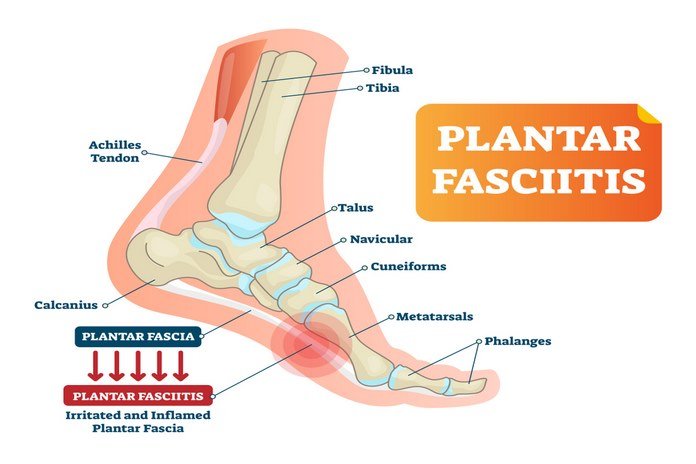Plantar Fasciitis
Plantar fasciitis is one of the most commonly occurring causes of heel pain in the majority of the population. Plantar fasciitis includes inflammation of a broader band of tissue known as plantar fascia that runs along the bottom of the feet and joins the heel bone to the toes. The condition typically results in stabbing pain that develops with your initial steps in the morning. As long as you get up and start moving, the pain commonly reduces but it might come back after prolonged periods of standing and when you stand up at once after sitting. (1)
The cause of plantar fasciitis is yet poorly understood. The condition is more common among athletes, runners, and people who are obese. The condition of plantar fasciitis is the most commonly occurring cause of pain commencing on the bottom of the heel. Almost 2 million plantar fasciitis patients receive treatment for the condition every year. Plantar fasciitis develops when the band of tissues i.e., the planta fascia supporting the arch of each foot suffers irritation and inflammation. Pain resulting from plantar fasciitis is absolutely unbearable at times when the tissues suffer wearing off and inflammation.

In addition, it is utterly important to understand the anatomy of the plantar fascia, which is a longer, thinner ligament that runs directly beneath the skin of the bottom of your feet. The plantar fascia joins the heel to the front of the foot and provides support to the arch of your foot. The condition of plantar fasciitis is a degenerative condition of the thicker band of tissue also known as a fascia at the bottom of your feet that is running across the heel to the toes. According to one past assumption of the doctors, bony growths known as heel spurs are the underlying cause of pain occurring in plantar fasciitis patients.
However, advanced research indicates that heel spurs are actually not the cause but a consequence of plantar fasciitis. The resulting heel pain due to plantar fasciitis is quite common. Teachers, athletes, and waitresses might have torn or inflamed fascia due to prolonged periods of standing. Anyone who repeatedly pushes off with their feet to run a race or walks on a hard surface is at risk of getting plantar fasciitis. The symptoms of plantar fasciitis include a stabbing or dull pain depending on your condition. Luckily, there are some reliable at-home remedies that can provide relief against the symptoms.
Although the inflammation of the plantar fascia, the rubber band-like ligament stretching from the heel to the toes is quite painful for most people. Imagine walking around with strong pain in your heel, a stabbing pain, or a tender lesion on the bottom of your feet that hits you every time your feet hit the ground. However, the stabbing pain usually subsides from being a stabbing pain to mild pain that disappears altogether. Normally, each foot had 33 joints, 28 bones, and more than 100 tendons, ligaments, and muscles. The plantar fascia not only supports the arch of the foot but also acts as a shock absorber and bears your weight. (2)

